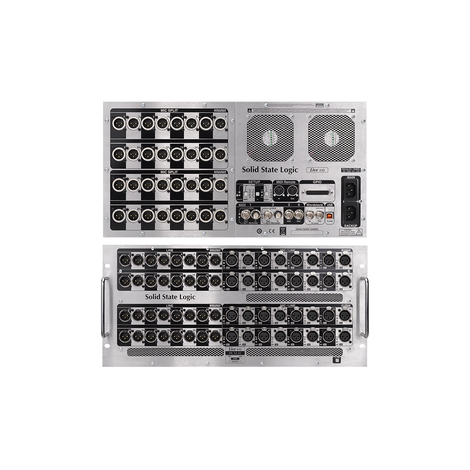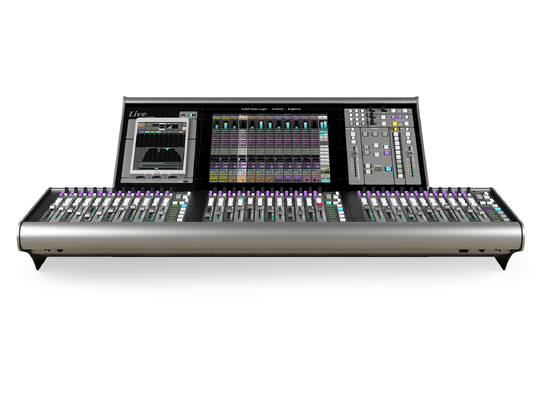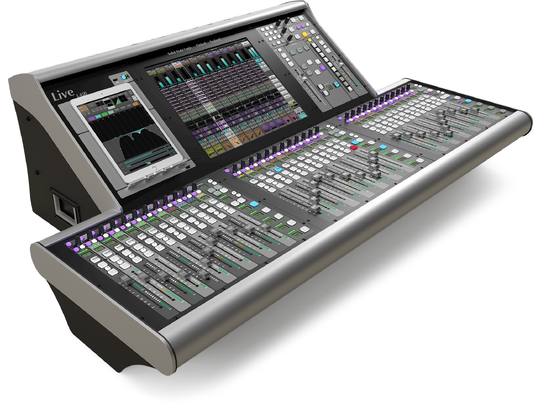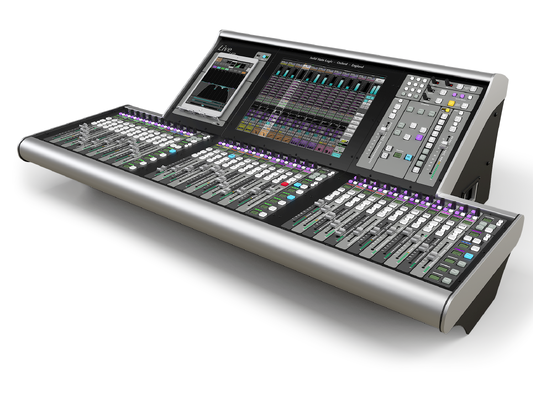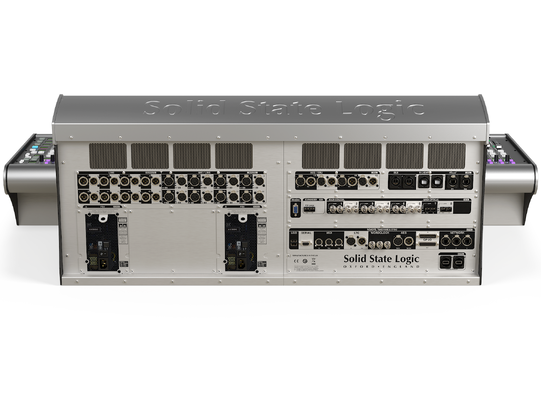Featuring SSL Live’s next-generation patented Optimal Core Processing (OCP) technology, the new L450 console represents the perfect balance of production power and control. Corporate facilities, touring and Houses Of Worship which require the superior sonic performance and advanced workflow the SSL Live platform offers within the ergonomic layout of the L200, but do not require the almost limitless DSP capabilities of the new flagship L650. The L450 console is perfectly positioned to fulfill your production requirements.
Visuals up front, faders in front
Based on the unique ergonomic design of the L200 console, which is now shared with the new flagship L650 console, the L450 sits between them in terms of processing power. The L450 is built around the same 19” multi-touch screen as the L550 Plus and L650, but features TaCo APP tile instead of Channel Control tile. The renowned triple-wide fader tile layout and cutaways for external screens which keep line of sight to artists and stage at a premium have also been retained, creating two distinct areas of focus for operators.
The SSL Live consoles bring decades of design experience to the specific demands of live sound production. The result is an uncluttered design that is intuitive and ergonomically efficient with a collection of unique features to keep the operator in complete control at all times. The system lets you use your own balance of touch screen and hardware control to work the way you want to. A single super bright, high resolution 19" multi-touch screen is the heart of the console and can be used for system & I/O configuration, creating surface layouts using the Layer Manager, the Automation interface, the Effects Rack and two different views of your project; The Channel View and Console Overview.
TaCo APP & external touchscreen
Tablets can be used to bring additional touch screen control over Channel Processing and Effects Rack processing using the SSL TaCo tablet control application. The L450 offers a dedicated tablet mount around the 19" multi-touch screen, keeping visual display centred around line of sight for the operator.
Additional screens connected to external PC's or touchscreen laptops running SOLSA can be arm mounted to the console to bring yet more touchscreen control options.
Architecture
The L450's DSP is built on next-gen Optimal Core Processing (OCP) technology and is extremely flexible. The console has 856 inputs and 856 outputs. It has 240 mix paths at 96kHz. These paths can be assigned as Channels, Stem Groups, Auxes and Masters to suit demands and configured as anything between mono, which use a single path, to 5.1 which uses six paths.
A 32 Input / 36 Output Matrix also has its own dedicated processing and can be segmented into four separate smaller matrices if desired. All 36 Matrix Output paths have High and Low Pass Filters, 4 band EQ, 2 seconds of delay and our unique All Pass Filters available. This is in addition to two inserts that can be used with both the internal Effects Rack and external processing.
L450 Local I/O
The L450 offers a comprehensive collection of Input and Output connectivity with the capacity to serve both Front of House and Monitor applications. SSL Live I/O meets the exacting audio benchmark SSL has set with the SuperAnalogue™ range of analogue consoles. It delivers a frequency response that is within 0.05 dB of flat from 20 to 40 kHz (within 1.3 dB down to 10 Hz) and a THD+N of <0.005%. Digital to Analogue Conversion is 24bit/96kHz and the console operates at 96kHz.
The local and remote I/O mic/line amps use SSL’s patented mic amp technology to deliver the highest quality signal to the console. The circuitry is DC coupled (no electrolytic capacitors in the signal path) and high input impedance. Mic amp gain is controlled extremely precisely in more than 16,000 steps ensuring totally smooth control, very good common mode rejection and extremely low distortion. Listening tests are recommended.
L450 local analogue I/O configuration; 16 mic/line inputs, 16 line outputs, 2 Headphone/Monitor outputs. AES/EBU digital I/O configuration: 4 pairs of inputs and 4 pairs of outputs. AES/EBU I/O has fully variable sample rate conversion.
Standard MADI port configuration: 6 redundant pairs of coaxial and 2 fibre (non-redundant). If redundancy is not required, these connections can be independent, providing a maximum of sixteen ports. In addition there is a separate optical MADI port (out/in), designed for use as an ‘FX Loop’ for connecting an external FX device such as a system using Waves Multirack or a VST effects host. The standard configuration offers SSL Blacklight II connectors. A Dante card is also available offering 32x32 channels of I/O at 96 kHz (or 64x64 channels at 48kHz) over a redundant Dante connection. An redundant pair of SSL X-Light connectors provide 256 bi-directional channels at 96kHz between console and stage using a single cable with ruggedised connectors. The back panel also accommodates connectors for MIDI, LTC, Wordclock and GP I/O. The console has redundant power supplies.
| Paths | 240 |
| Input Channels | 240 |
| Stem Groups | 60 |
| Auxes | 156 |
| Masters | 24 |
| Matrix | 4 x 32 inputs / 36 outputs |
| VCAs | 36 |
| FX slots | 60 |
| Sample rate | 96kHz or 48kHz |
| Local analogue I/O | 16 mic/line, 16 line out, 2x headphone |
| Local AES/EBU I/O | 4 pairs (with SRC) |
| MADI ports | 6 coax, 2 optical |
| MADI FX loop | Optical in/out x 1 |
| SSL Blacklight II | 1 redundant pair |
| SSL X-Light | 1 optional redundant pair * |
| Local Dante @ 96 kHz | Opt. 32x32 redundant pair |
| Maximum I/O @ 96 kHz | Up to 856 in/out |
| Local MIDI & GPIO | MIDI I/O/THRU, 12 GPIO |
| Channel Control Tile | Standard |
| Main touch-screen | 19" 1500 Nits |
| Power Supply | Two redundant |
| Width | 1376mm (54.2") |
| Weight | 85kg (188 lbs) |
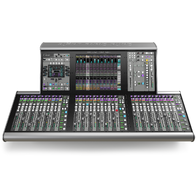
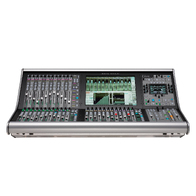
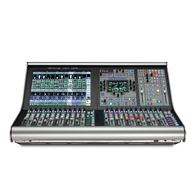
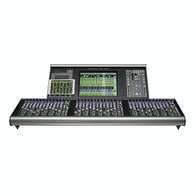
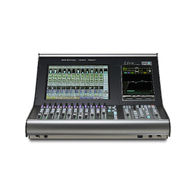
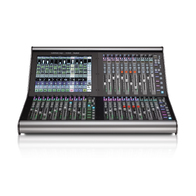
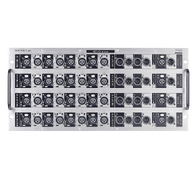
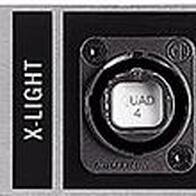
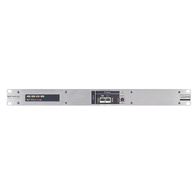
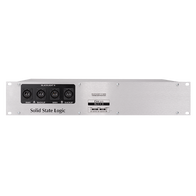
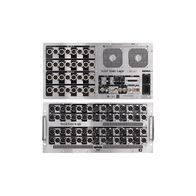
Share this page
Copy and paste the link below to share this page:
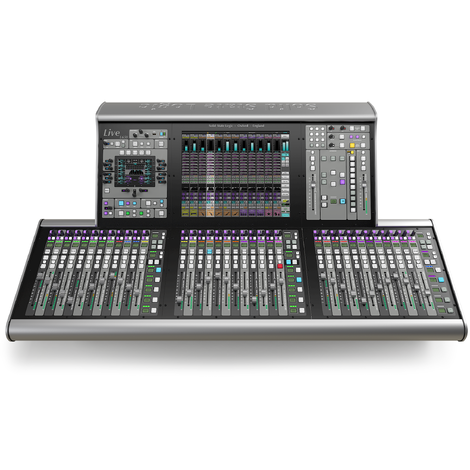

Solid State Logic L650
The most powerful SSL Live console
SKU: SSL9999
Designed to support the most demanding large-scale productions in international touring, House of Worship and corporate facilities, where multiple live, broadcast and Streamed/OTT mixes are often required. The new L650 console features patented next-gen Optimal Core Processing (OCP) technology, advanced AoIP and outstanding flexibility, making it the most powerful SSL Live console ever.…
View details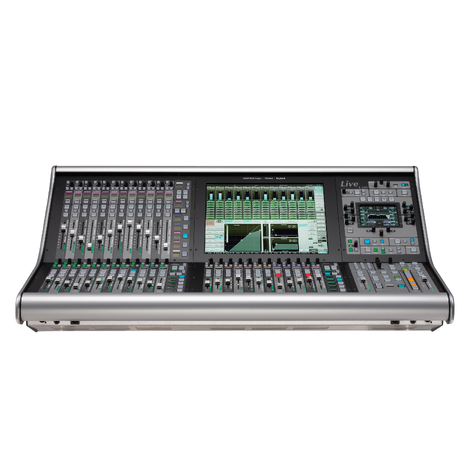

Solid State Logic L550 Plus
Live sound production powerhouse
SKU: SSL9999
Like all SSL consoles the secret to the success of the L550 Plus is SSL’s dedication to great sound. Part of the success is attributable to exemplary hardware performance throughout the signal chain: bringing SSL Studio grade mic pre’s to the stage, outstanding audio conversion, 96kHz operation and magnificent summing. There is a sublime transparency, definition and detail in the fundamental sound of the L550 Plus that is difficult to describe but is immediately recognisable as the SSL signature. An equal, perhaps even greater part of the secret of the power of the L550 Plus is the way it…
View details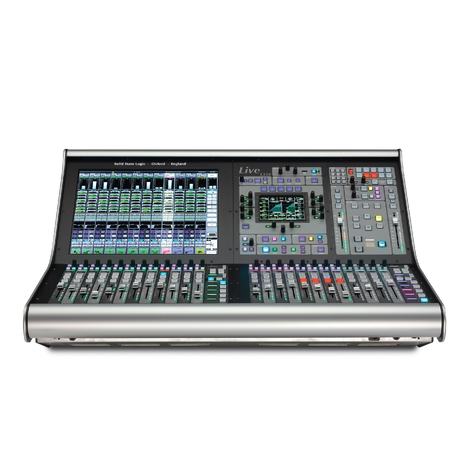
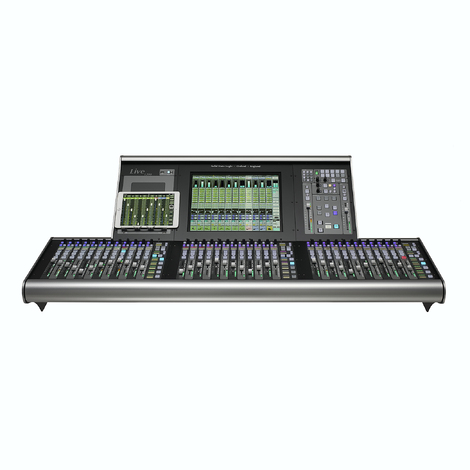
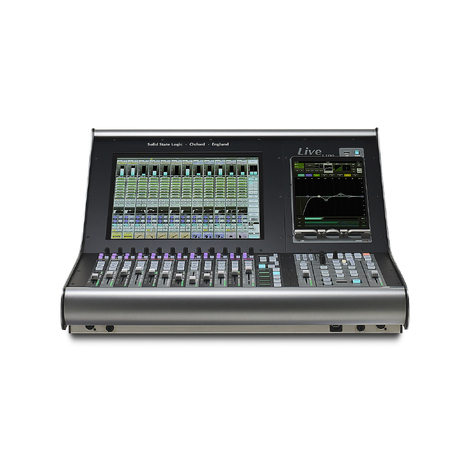
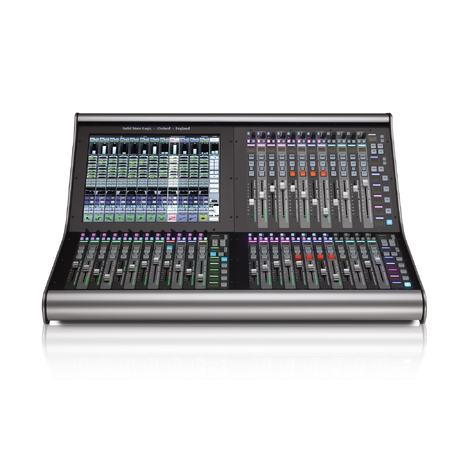

Solid State Logic Expanders
Scalable solution for users who require more faders in their workflow
SKU: SSL9999
…
View details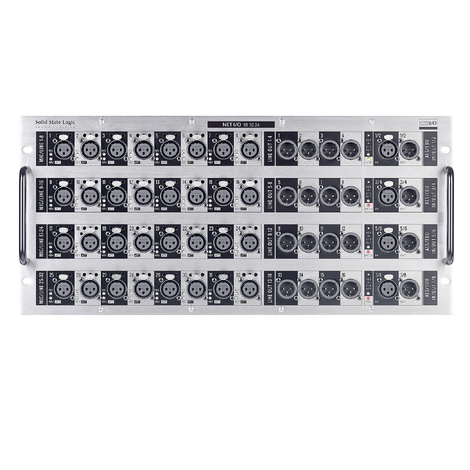
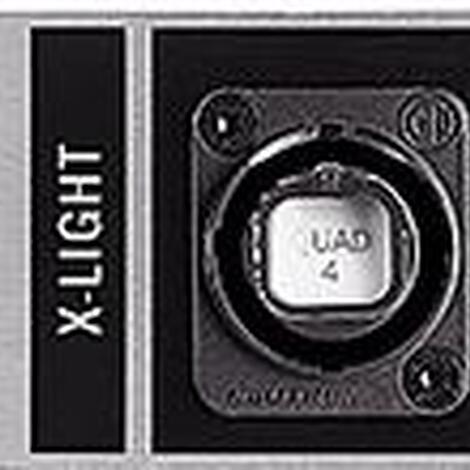

Solid State Logic X-Light Bridge
High channel count, ultra-low latency Dante interface
SKU: SSL9999
…
View details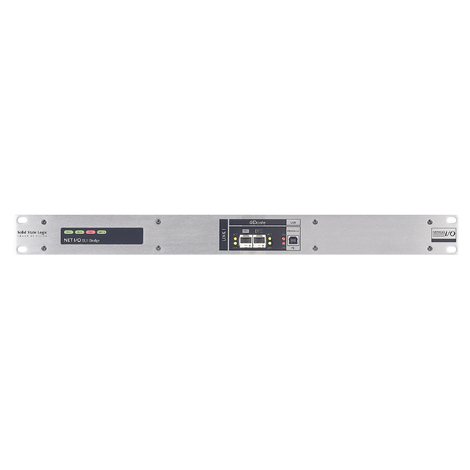

Solid State Logic Blacklight II Bridge
High channel count Dante interface
SKU: SSL9999
…
View details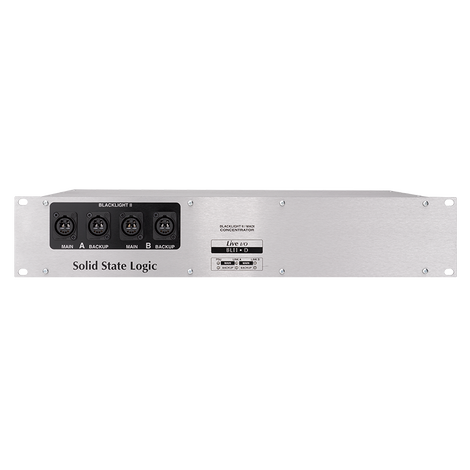

Solid State Logic Blacklight II Concentrator
High density MADI I/O device delivering pristine digital audio
SKU: SSL9999
…
View details